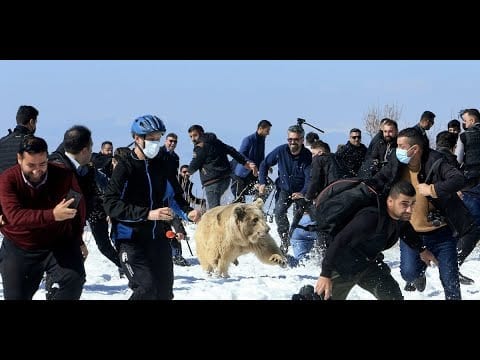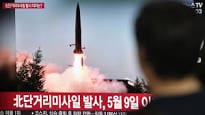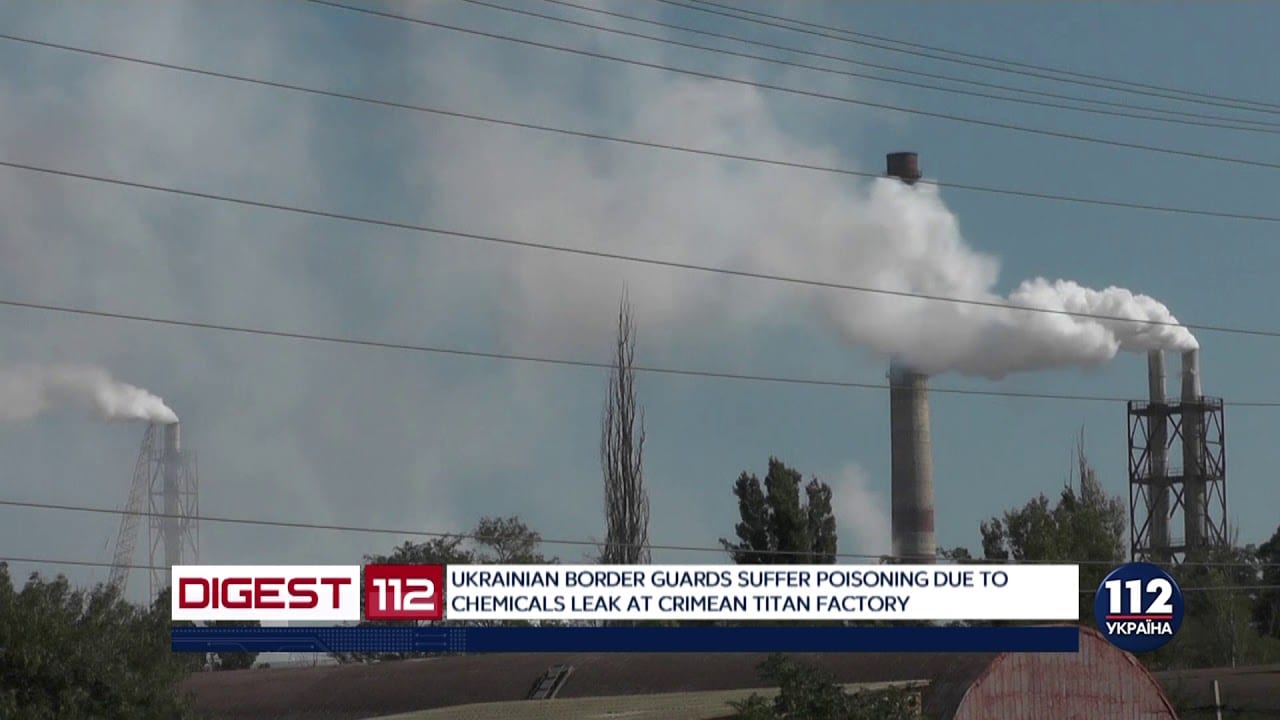In the ever-evolving world of aesthetic treatments, botox and dermal fillers have gained popularity
Category: Health & Environment

Early Results show suicide dropping in 2020.

This video shares different options you have when someone is suicidal. These options include alternatives to calling 911 and how to make the choice between one of these options and 911

This video is designed to help those who are struggling to find a reason to continue living.

Twelve things not to say to someone who is suicidal

Kurdish animal rights activists released six bears into their natural habitat in the Iraqi mountains yesterday.
The bears were previously kept in cages as pets in people’s private homes in Duhok, Iraq.
One bear charged towards the crowd of spectators when it was released, before wandering off into the snowy Gara Mountain. Hundreds of activists, photographers, police and soldiers had gathered by the public road that runs around the mountain for the event.
The Kurdish American Cooperation Organisation (KACO), the local wildlife conservation group that released the bears, was notified by local activists of homes where the bears were held captive. There is no law in Iraq against private individuals holding wild animals such as bears, lions and tigers in captivity, and local activists say this is a growing trend in recent years.
This is the third time since 2017 that KACO has released bears from captivity in Iraq. The organisation released four bears in 2017 and a further two in 2018 – one of which attacked the crowd and injured at least one photographer when it was released.
Syrian brown bears have become almost extinct in the mountains of Kurdistan in eastern Iraq. Wildlife snatchers hunt Syrian brown bears for their fur, for their bile and other bodily substances, which are sold for use in traditional Chinese medicine, and to sell them on as pets to private individuals. And as climate change and agricultural developments erode their natural habitat, the bears often enter human settlement areas in search of food, where they are exposed to hunters and snatchers and are often killed by locals as a pest control measure.
While the Ursus arctos (brown bear) species as a whole is considered ‘of least concern’, the Syrian brown bear, a Middle Eastern subspecies, is endangered. It once ranged across the Middle East, but has been extinct in Syria for fifty years and is nearing extinction in Iraq.
Mature Syrian brown bears can weigh up to 250kg and reach a nose-to-tail length of up to 2.5 metres, making them the smallest brown bear subspecies. They have pale brown fur and are distinctive for their white claws – a trait that is unique to this subspecies.

There are many myths surrounding suicide. Some are harmless. Yet, some myths are dangerous

Shootings of unarmed black men across the nation have sparked firestorm, and these stricter

South Jakarta Mayor Promotes Smart Farming Program, Agriculture 4.0

According to art. 55, 56, 59, 60 of the Convention relative to the protection of Civilian Persons in Time of War of August 12, 1949, maintenance of occupied territories is an obligation of the occupying party. As the Crimea was illegally annexed by Russia in spring 2014, responsibility for an ecological situation is the Russian obligation.
Let’s briefly run back over chronology of events. In the north of the Crimea, in the city of Armyansk there is the biggest plant in Eastern Europe on production of titanic products – Ukrainian Chemical Products better known as “Crimean Titan” owned by the Ukrainian oligarch Dmitry Firtash who is currently taking shelter in Austria from extradition to the USA. Notwithstanding occupation and sanctions, the plant continues its work, receiving raw materials through shell companies and carriers. A process of titan production is followed with a large number of dangerous chemical wastes used to be unloaded in special precipitation tanks nearby the plant. For neutralization of their negative impact on environment, they were filled in with a large amount of fresh water received from the North Crimean channel. After occupation in 2014, the Ukrainian authorities used their legitimate right, blocked the channel, thus depriving the Crimea of water from Dnieper. In consequence the management of the enterprise and officials had to cover requirements of water, using local resources: small reservoirs of rain water and artesian wells. But they were quickly exhausted, and the summer of 2018 was hot, that caused accident.
On the night of August 24 there was an emission of harmful substances about what locals reported. Metal subjects were covered with unclear oxidation, trees started perishing, in air there was an unpleasant chemical smell. The local occupational administration tried to hide this event, having neutralized emission consequences by filling up of settling tank with soda. But the factor of high temperature of air was not considered, and as a result the situation was aggravated. In vicinities of the plant and in the city death cases from suffocation of birds and small animals (rodents, domestic cats) were reported. It was also reported about death of people, but there is no reliable information on it. Nearly two weeks later (on September 4), the Russian officials declared the beginning of partial evacuation of the population, so far only children, from Armyansk and neighboring villages. But the central Russian TV channels keep silence over technogeneous accident. Though the Russian authorities got used to hide such information as it was with emission of a radioactive element ruthenium-106 at the end of 2017 in Chelyabinsk, in the south of the Urals. The fact of the emission is confirmed by measurements carried out in Germany and France.
However, let’s talk about the Crimean case. There is an opinion that accident was deliberately provoked to force Ukraine to resume supply of water to the peninsula. Even the Ukrainian border service stated poisoning of its several employees who are on duty on border with occupied territories. However, the similar version looks very far-fetched. It is much more probable that the human factor is the main cause of the accident: habitual for Russians ” trusting to luck ” and postponement of the solution of small problems as a result lead to such deplorable consequences. And after all this situation is not simply environmental disaster for Ukraine and Russia, but for the whole Black Sea region, even for Eastern Europe and Asia Minor. The cloud of chemicals does not care of geopolitics and nationalities, and the poisoned rainfall depends on the wind. It is worth remembering the tragedy in Chernobyl – accident happened in the USSR, but all Europe suffered. Here the situation is very similar.
Russia once again confirmed its inability to maintain the occupied territories. After all the plant where this tragedy happened is not the only potentially dangerous undertaking in the Crimea. Also it should be taken into account that for the last 4 years Russia has provided the peninsula with the weapon, including nuclear. And the only exit from the current situation – a full and unconditional deoccupation of the Crimea. Only this way is a possible resolution of all those problems.

Since 2010, climate change related “natural” disasters have cost the United States a total

President Trump said recently in a press conference about the Charlottesville KKK riots,